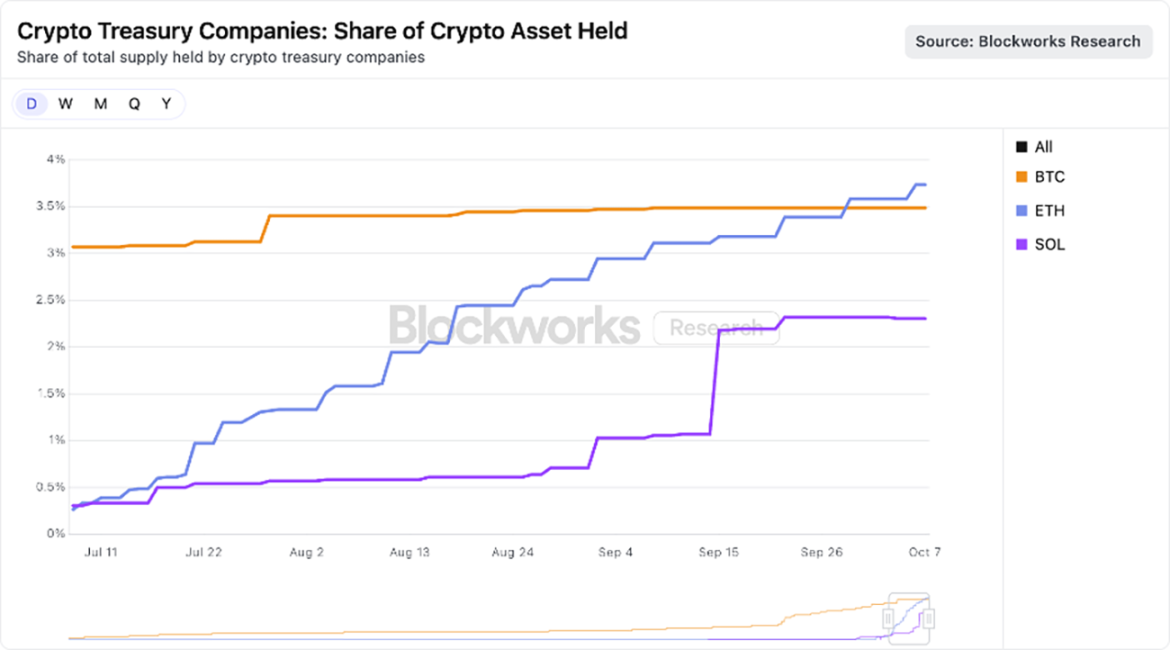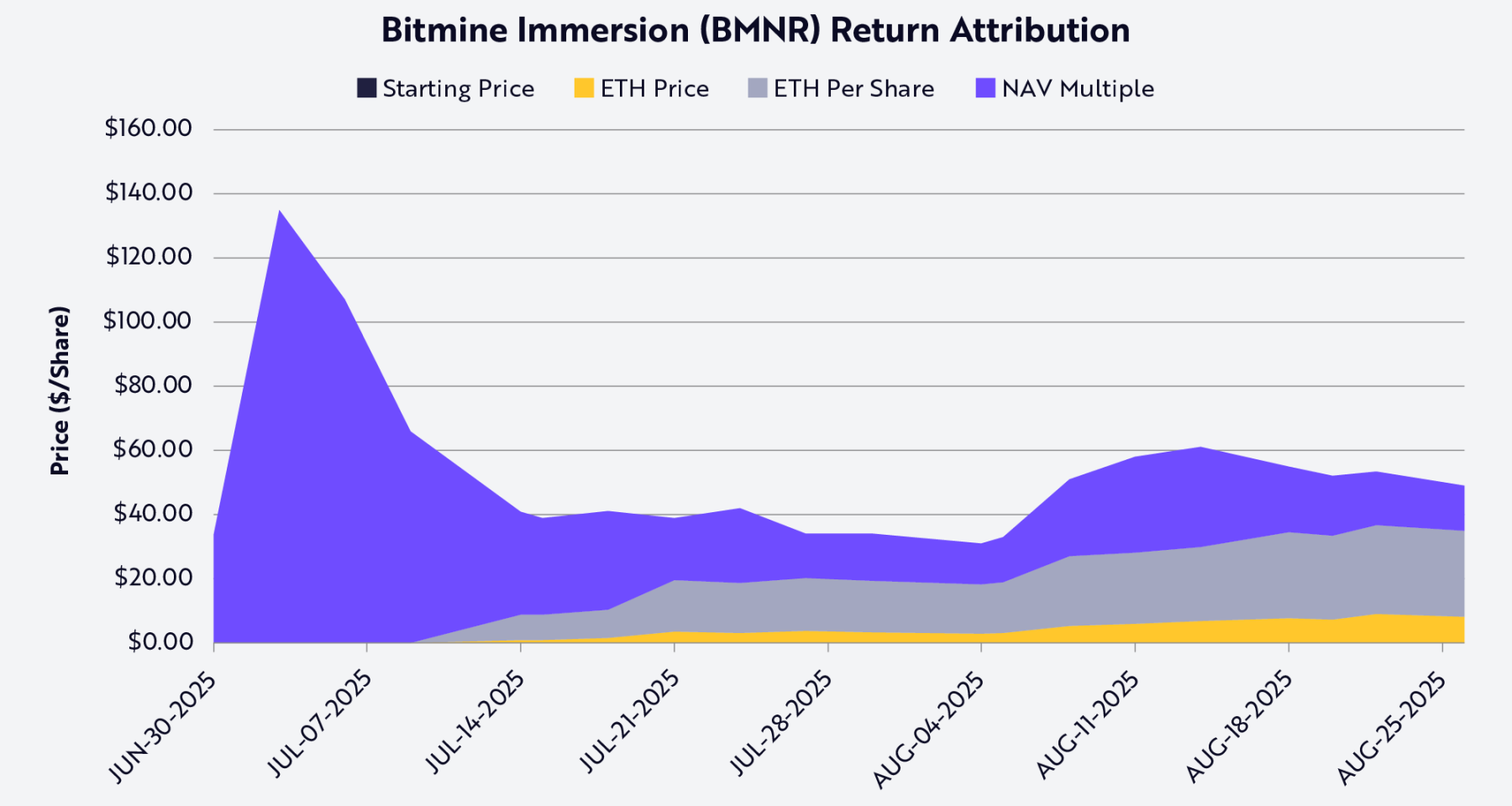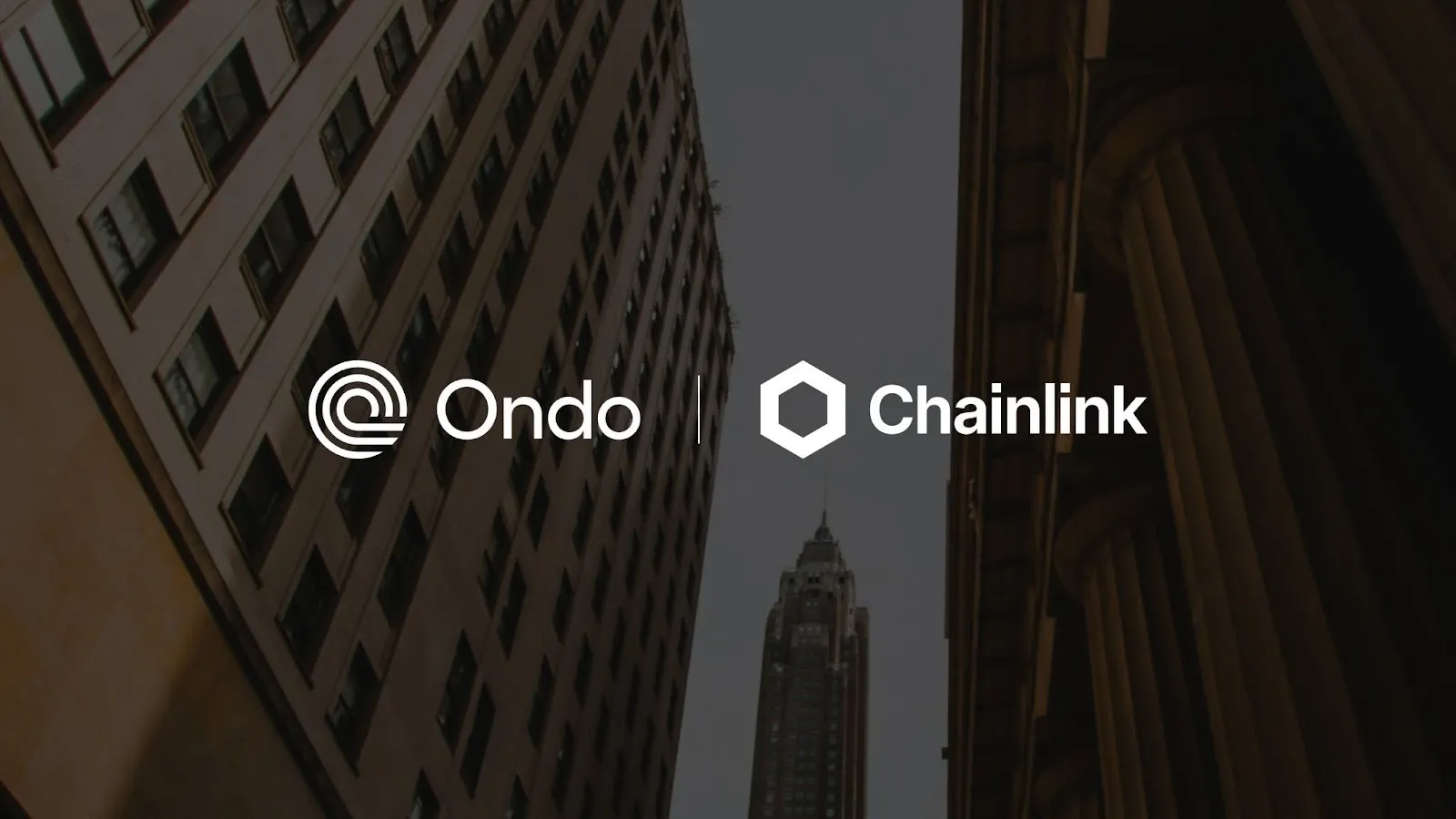Unlike passive ETFs that hold crypto assets, Digital Asset Treasuries (DAT) are dynamic capital market vehicles with the potential to amplify asset exposure, earn protocol yields, and optimize capital allocation.
Written by: Lorenzo Valente
Translated by: Chopper, Foresight News
From August to September 2025, Digital Asset Treasuries (DAT) became the core vehicle for the mainstreaming of crypto assets on Wall Street. This shift likely surprised many in the industry, who originally believed that exchange-traded funds (ETFs) would continue to dominate rather than be gradually replaced by DAT.
What exactly happened behind the scenes? A few years ago, Strategy was the first to launch a Bitcoin DAT model, but at that time, investors were still unaware of how to apply it to other crypto assets. This article will delve into the market landscape and related controversies surrounding DAT.
Definition of DAT
Digital Asset Treasuries (DAT) refer to companies that hold cryptocurrencies like Bitcoin, Ethereum, and Solana directly on their balance sheets, allowing investors to gain indirect exposure to crypto assets by purchasing their shares.
Unlike spot Bitcoin/Ethereum ETFs regulated by the U.S. Securities and Exchange Commission (SEC), which passively hold cryptocurrencies with shares tied 1:1 to the underlying assets, DAT are operating companies that can manage their holdings through leverage, corporate strategies, or financing tools. ETFs, as regulated public investment vehicles, provide compliant asset exposure, while DAT introduce enterprise-level risks, with returns or losses potentially exceeding the volatility of the underlying assets themselves.
Long before the term "Digital Asset Treasuries" emerged, Strategy had already created the first DAT for Bitcoin. Under the leadership of Michael Saylor, the company downplayed its enterprise software business and focused entirely on accumulating Bitcoin. As of September 15, 2025, Strategy had purchased over 632,000 Bitcoins for $46.5 billion, at an average price of $73,527. Currently, the amount of Bitcoin held by the company accounts for over 3% of the total supply of 21 million Bitcoins.
Strategy accumulated its Bitcoin holdings through various financing strategies: initially issuing convertible senior notes, followed by issuing senior secured notes with a coupon rate of 6.125%, but the real breakthrough came from its at-the-market (ATM) stock issuance plan. Due to its stock (ticker MSTR) trading at a significant premium to book value, Saylor diluted existing shareholders by issuing new shares, using the raised funds to purchase more Bitcoin and increase the per-share Bitcoin holdings. Essentially, the funds provided by shareholders leveraged Strategy's Bitcoin exposure.
This model has sparked widespread controversy. Critics argue that DAT "sells $1 of assets for $2," meaning if a DAT's trading price is twice its market net asset value (mNAV), investors must pay $2 for $1 of Bitcoin on the balance sheet. In their view, this premium is neither reasonable nor sustainable.
However, so far, Strategy's stock performance has overturned this judgment, providing substantial returns to shareholders. Except for a brief period of discount during the bear market from March 2022 to January 2024, MSTR has maintained a significant mNAV premium over the long term. More importantly, Saylor has strategically utilized this premium: issuing shares at prices far above book value to continuously increase Bitcoin holdings and achieve appreciation in the portfolio. The results show that since first purchasing Bitcoin in August 2020, MSTR has not only allowed shareholders' Bitcoin exposure to achieve compound growth but has also significantly outperformed a simple buy-and-hold Bitcoin strategy.
Market Landscape of DAT
Five years after Strategy's first Bitcoin purchase, hundreds of DATs have emerged. These new vehicles are accumulating various crypto assets such as Ethereum, SOL, HYPE, ADA, ENA, BNB, XRP, TRON, DOGE, SUI, and AVAX.
Currently, the market is beginning to concentrate on large-cap assets, with several well-funded DATs competing to accumulate ETH and SOL. As shown in the chart below, DATs focused on ETH collectively hold 3.74% of the Ethereum supply, while Solana-focused DATs hold 2.31% of the SOL supply.

Data Source: Blockworks, as of August 25, 2025
In our view, while the establishment of some DATs may be driven by short-term speculative purposes, the ultimate winners could become more efficient vehicles for crypto assets than spot ETFs. Leveraging corporate structural advantages, DATs can utilize leverage, corporate financing, and strategic options that ETFs cannot achieve. As long as their mNAV premium is sustainable, these advantages will persist, and subsequent chapters will further explore this topic.
Why is the mNAV premium of DAT reasonable?
As a large asset management company with significant exposure to cryptocurrencies, ARK Invest has shown strong interest in the emerging DAT space and has recently invested in a leading Ethereum DAT—Bitmine Immersion. While we maintain a cautious stance on DAT and closely monitor its rapid development, we can still understand the reasons why some DATs achieve mNAV premiums, mainly including the following points:
Income / Staking Yields
Layer 1 blockchains with smart contracts (especially Ethereum) provide native yields through staking mechanisms, rewarding users who participate in maintaining network security. In the crypto asset ecosystem, this yield essentially equates to a "risk-free rate," as it is generated internally by the protocol and does not involve counterparty risk.
In contrast, U.S. spot ETFs do not allow staking profits on the underlying assets. Even if regulators change their stance, due to the design limitations of the Ethereum network, ETFs can only stake a small portion of their holdings (possibly less than 50%)—the "liquidity constraints" of the Ethereum network dictate the number of validators that can join or exit at any given time. This limitation is crucial for network security, preventing malicious attackers from rapidly starting or shutting down a large number of validators, thus avoiding consensus mechanism or state management failures, which can lead to ETH staking or unstaking processes taking up to two weeks. Although ETFs can circumvent this limitation through liquid staking protocols, compliance, liquidity, and centralization risks may prevent them from staking holdings on a large scale.
DATs, on the other hand, have greater operational flexibility. A typical DAT is a streamlined organization, usually operated by a small team, yet capable of generating substantial yields. For example, if Bitmine Immersion reaches a market cap of $10 billion and stakes all its ETH, it could generate approximately $300 million in free cash flow annually. These funds can be reallocated for mergers and acquisitions, token purchases, on-chain opportunities, or dividends.
Accumulation Speed
The speed of asset accumulation and the growth rate of crypto assets per share are important reasons for DATs to achieve book value premiums. The growth rate of crypto assets per share in DATs may exceed the price increase of the underlying assets themselves, thereby accelerating revenue growth through staking yields.
Taking Bitmine as an example. On July 13, the company held 163,142 ETH based on approximately 56 million fully diluted shares; at the time, with ETH priced at $2,914, each share corresponded to 0.0029 ETH, valued at $8.45. Just 31 days later, we estimate that Bitmine's ETH holdings increased to 1.15 million, and fully diluted shares rose to 173 million; at that time, with ETH priced at $4,700, each share corresponded to 0.0066 ETH, valued at $32.43.
In one month, the price of ETH rose by about 60%, while Bitmine's per-share ETH holdings grew by 130%. In other words, Bitmine created value far exceeding direct ETH holdings through an arbitrage model of "issuing shares at market price (ATM) + value-accretive acquisitions."
Of course, this dynamic only holds if the mNAV premium exists and the ATM issuance has a value-accretive effect. If the premium narrows or turns into a discount, DATs will have to rely on other capital market tools, such as selling part of the underlying tokens to repurchase shares.
Using the Shapley value decomposition method, we can attribute the stock price performance of Bitmine (ticker BMNR) to three variables: ETH price, growth in per-share ETH holdings, and changes in mNAV premium or discount (see the chart below). As of August 25, the growth in per-share ETH holdings was the largest factor driving BMNR's stock price and shareholder returns.

Data Source: ARK Invest, as of August 25, 2025; Note: Based on Shapley average value, using only public data
Liquidity and Low-Cost Capital
Liquidity is a core reason for the DAT premium. Issuing shares at market price (ATM) and convertible bonds are only feasible when the stock has liquidity: ATM relies on sufficient daily trading volume, requiring DATs to continuously issue shares without depressing the stock price; similarly, convertible bonds—investors purchase "bonds + conversion options," and the value of the options depends on the stock having sufficient liquidity for efficient selling or hedging. Tools lacking liquidity cannot attract investors and may lead to excessively high financing costs for the issuer.
Scale is also critical, as the bond market typically serves large companies. Investment banks and institutional lenders rely on secondary market demand, which depends on the company's market capitalization and liquidity. In fact, most syndicated loans and institutional convertible bond issuances are only open to companies with market caps exceeding $1-2 billion. Below this threshold, financing costs will rise significantly, and financing channels are usually limited to customized or venture capital-style credit tools. For example, Strategy was able to issue multiple rounds of convertible bonds totaling billions of dollars precisely because its stock had liquidity and its market cap was in the hundreds of billions.
The issuance of preferred stock also reflects this. The structural equity transactions employed by Strategy require a strong balance sheet and secondary market liquidity to attract institutional investors; preferred stock buyers must believe they can exit or hedge their positions, and illiquid DATs cannot access this financing channel.
In short, liquidity can lower financing costs. To compensate for the risks of insufficient liquidity, investors will demand higher returns, so illiquid DATs must pay a price through one or more of the following ways: higher equity issuance discounts, higher bond coupon rates, or stricter covenant terms. In contrast, liquid DATs can raise funds at a lower cost to accumulate Bitcoin or Ethereum, creating a flywheel effect that reinforces the premium.
Strategic Options
Many investors compare crypto assets (especially L1 tokens) to stocks, commodities, or currencies, but in reality, their differences far outweigh their similarities. DAT highlights this distinction and demonstrates that ETFs may be inefficient vehicles for L1 assets. The corporate structure of DAT provides "strategic options corresponding to book value premiums." Large DATs can acquire tokens at a discount in times of distress (e.g., during the FTX bankruptcy liquidation sale) or acquire other DATs trading below their mNAV.
For example, Bitmine Immersion, with a market cap of $10 billion, only needs to issue 2%-3% of its stock to acquire an Ethereum DAT worth $200 million at a discount, achieving value-accretive mergers. In addition to mergers, ecosystems like Solana and Ethereum also offer other opportunities: these networks host hundreds of billions of dollars in liquidity and applications, and sufficiently large DATs can achieve profitability through "on-chain security maintenance" or "providing liquidity." In fact, protocol participants may offer incentives to attract well-funded participants into their ecosystems.
Another arbitrage opportunity exists in the "interest rate differential between traditional markets and on-chain," which sometimes exceeds 500 basis points (i.e., 5%). In a low-interest-rate environment, DATs can borrow dollars at low costs in traditional financial markets and then deploy the funds into on-chain lending pools to earn significantly higher yields. Currently, stablecoin pools like sUSDS, sUSDe, and SyrupUSDC have annualized yields of about 7%, approximately 300 basis points (3%) higher than U.S. Treasury yields, giving DATs the opportunity to generate additional income streams beyond mere token appreciation.
Risks
Although DATs provide investors with a new way to access crypto assets, they also come with significant risks that investors must carefully weigh.
First is the reliance on market premiums. The DAT model (especially the growth of crypto assets per share) depends on the stock trading price being above the mNAV. When the premium narrows, the ability of DATs to achieve value appreciation through stock issuance will weaken or even disappear, forcing them to slow down acquisitions or sell tokens to repurchase shares.
Second, liquidity is a double-edged sword. While liquidity allows DATs to obtain low-cost capital, it can also trigger liquidity crises during market downturns. In a prolonged bear market, DATs may fall into a negative feedback loop: stock prices plummet, financing costs rise, and potential redemption pressures force token sell-offs.
Third, regulatory uncertainty is increasingly prominent. Unlike ETFs, DATs exist in a regulatory gray area, and their accounting treatment, information disclosure, and other aspects may face regulatory scrutiny—these regulatory requirements are more applicable to investment funds than to operating companies. Regulatory intervention could affect their capital market financing channels or limit their strategic options.
Fourth, governance and operational risks may be underestimated. Many DATs are managed by small teams overseeing billions of dollars in assets, and weak internal controls, poor risk management, or misaligned incentives could quickly erode value. In the worst-case scenario, some DATs could become "disguised aggressive on-chain hedge funds"—chasing yields, leveraging up, and lacking transparency in capital allocation, leading to hidden risks or even bankruptcy.
Conclusion
The rise of DATs offers investors a new way to access crypto assets. From Strategy's seemingly unconventional bet to its current widespread phenomenon, DATs have rapidly gained popularity within mainstream L1 blockchain protocols like Ethereum and Solana. Although critics dismiss their model as "selling $1 of assets for $2," the reality is more complex.
The corporate structure of DATs possesses unique potential advantages that ETFs cannot match, which is why they achieve book value premiums: they can increase the value of each ETH or SOL share at a rate exceeding the price appreciation of the underlying assets; they have liquidity and scale advantages that allow them to obtain cheap capital throughout their capital structure; and they have opportunities for mergers, token purchases, and on-chain investments.
Unlike passive ETFs that hold crypto assets, DATs are dynamic capital market vehicles with the potential to amplify asset exposure, earn protocol yields, and optimize capital allocation. For certain assets, DATs may not only be more sustainable than ETFs but also more efficient. They are not merely temporary arbitrage tools but could become long-term institutions connecting traditional financial markets with the new world of crypto assets.
免责声明:本文章仅代表作者个人观点,不代表本平台的立场和观点。本文章仅供信息分享,不构成对任何人的任何投资建议。用户与作者之间的任何争议,与本平台无关。如网页中刊载的文章或图片涉及侵权,请提供相关的权利证明和身份证明发送邮件到support@aicoin.com,本平台相关工作人员将会进行核查。




